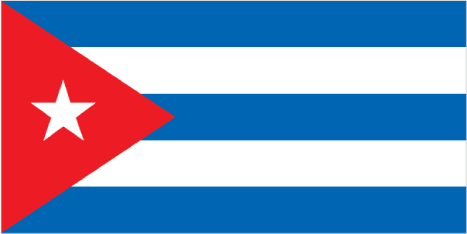To help inspire or plan your trip to Cuba, some of its major attractions
for travellers are shown below, including some of the best natural, historical, cultural and adventure sites in the country.
These include all of UNESCO World Heritage Sites for Cuba which represent the best
of the world's cultural and natural heritage.
Click on the icons below to focus on specific types of features
(click again to return to all).
|
|
|
|
|
|
|
|
|
|
|
|
 |
|---|---|---|---|---|---|---|---|---|---|---|---|
| Natural | History | Wildlife | Trekking | Cities | Religious Monument | Boat Journey | Rail Journey | Diving | Cultural | Adrenaline | UNESCO WHS |
Western Cuba - Natural attractions
| Sierra del Escambray | |
|---|---|
Located close to the town of Trinidad, the Sierra del Escambray mountains are an area of beautiful natural landscapes with good opportunities for hiking. Highlights in the region include Embalse Habanabanilla, Cuba’s highest lake, the Salto de Rocio waterfall and the Guayanara River valley, as well as walking through farmland, local villages and pine forests. | |
| Viñales Valley | |
|---|---|
The Viñales Valley in the Piñar del Rio province west of Havana is one of the most beautiful areas in Cuba. The valley is dominated by spectacular mogotes - karst-like conical towers of limestone up to 300 metres high formed by millions of years of wind and water erosion. Interspersed amongst these are the lush green fields of tobacco and sugar cane that form an important part of Cuba's economy. Traditional agricultural techniques are still used to maintain the best quality tobacco for Cuba's famous cigars. The valley is ideal for exploration by foot of its natural and cultural uniqueness. UNESCO World Heritage Site: Viñales Valley | |
| Cayo Levisa | |
|---|---|
Cayo Levisa is a small coral island off the north-west coast of Cuba. Renowned for its fishing, white sandy beaches and snorkelling in its coral waters, the island is a nice spot to relax after exploring the country, away from the tourist masses at the larger beach resorts. | |
| Maria La Gorda | |
|---|---|
Located on the western tip of Cuba in the forest-covered Parque Nacional Guanahacabibes, Maria la Gorda is a remote beach resort which offers excellent opportunities for diving and snorkelling with many species of coral and tropical fish. Nature treks through the forest offer the chance to see the many species that live in this biosphere reserve while turtles can be seen on the beaches between May and September. | |
Eastern Cuba - Natural attractions
| Gran Parque Nacional Sierra Maestra | |
|---|---|
The Gran Parque Nacional Sierra Maestra is a spectacular national park found amongst the Sierra Maestra Mountains, Cuba's largest range, which is famous as the base for Cuba's Revolutionaries in the 1950s. Comandancia de la Plata, the secret hideout of Castro and Guevara and base of Radio Rebelde which fed information to the revolutionaries, lies high in the mountains in lush jungle landscape and can be reached by a 3km hike from El Alto de Naranjo. The site includes a small museum, field kitchen and the command centre from where Castro planned the revolution and its aftermath. The park contains tow of Cuba's highest peaks, Pico Turquino (1972m) and Pico Cuba (1872m), which offer spectacular views of the region from their summits. | |
| Baracoa | |
|---|---|
Baracoa was the site of the first Spanish settlement in 1512 and Christopher Columbus himself arrived here 20 years previously. Located on the easternmost tip of Cuba, Baracoa is a quaint, sleepy town surrounded by tropical mountainous jungle. It's a great spot to relax after travelling through the country and to explore the surrounding mountains and learn about life in this remote part of Cuba. A hike to the summit of El Yunque (575m), the anvil-shaped mountain mentioned by Columbus in his diaries, will take you through coffee, banana and cocoa plantations as well as thick forest with numerous bird, reptile and butterfly species. | |
| Desembarco del Granma National Park | |
|---|---|
Desembarco del Granma National Park is situated in and around Cabo Cruz in south-east Cuba. It contains the world's largest and best preserved systems of marine terraces above and below water as well as coral reef, seagrass beds and mangroves. Its unique ecosystem is home to a large and diverse number of plant and animal species, including over 500 plant species of which 60% are endemic. UNESCO World Heritage Site: Desembarco del Granma National Park | |
| Alejandro de Humboldt National Park | |
|---|---|
Alejandro de Humboldt National Park in eastern Cuba is one of the most biologically diverse tropical island sites on earth where complex geology and varied topography have resulted in a huge number of endemic plant species. UNESCO World Heritage Site: Alejandro de Humboldt National Park | |





